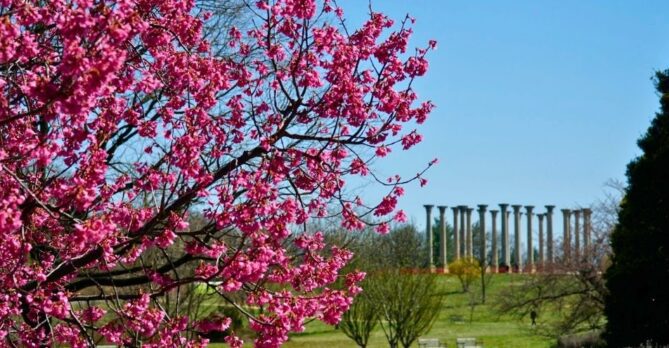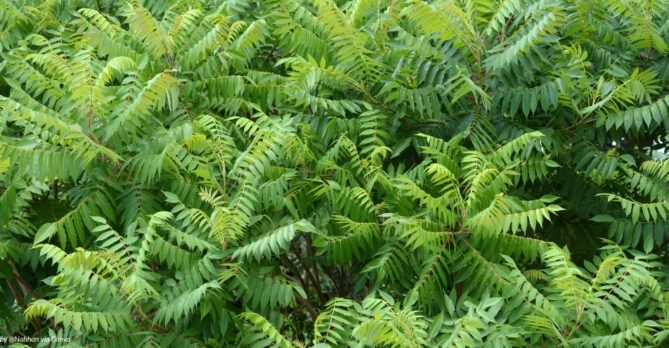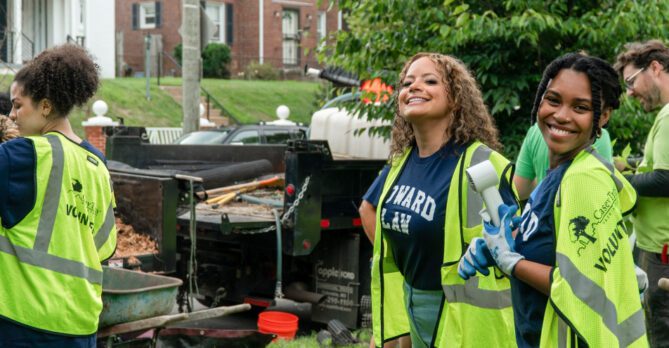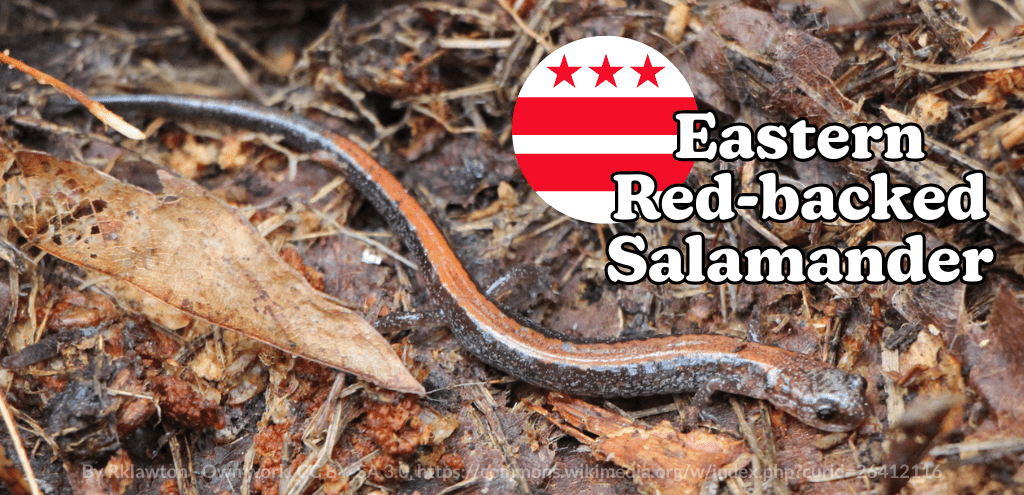
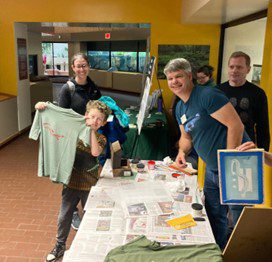 Students across Washington, DC, are in the final stretch of their campaign to have the Eastern Red-backed Salamander recognized as the official state amphibian. With the hearing fast approaching, there’s still time for individuals, groups, and schools to sign up and testify, lending their voices to this grassroots effort. This initiative, sparked by the enthusiasm of young advocates like Max and Milo and their classmates at Powell Elementary School, has gained momentum, inspiring many children to write letters to their council members and even prepare for the upcoming testimony.
Students across Washington, DC, are in the final stretch of their campaign to have the Eastern Red-backed Salamander recognized as the official state amphibian. With the hearing fast approaching, there’s still time for individuals, groups, and schools to sign up and testify, lending their voices to this grassroots effort. This initiative, sparked by the enthusiasm of young advocates like Max and Milo and their classmates at Powell Elementary School, has gained momentum, inspiring many children to write letters to their council members and even prepare for the upcoming testimony.
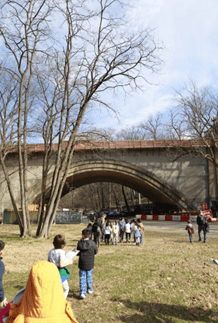 Last week, we spoke to Matthew Dull and Michael Evans, dads of Max and Milo, to learn how this journey began. Amid the challenges of the pandemic, Matt and Mike turned to the outdoors as a safe and enriching way to engage their children. Their inspiration for this outdoor education came from Elana Mintz and her nonprofit, Urban Adventure Squad. Elana’s work sparked an idea among the parents to promote outdoor learning and encourage kids to explore nature. As they ventured into the woods near their sons’ school, Matt and Mike began a tradition of overturning rocks and logs to uncover the hidden life beneath. This simple yet captivating activity revealed an abundance of Eastern Red-backed Salamanders and set them on a remarkable journey.
Last week, we spoke to Matthew Dull and Michael Evans, dads of Max and Milo, to learn how this journey began. Amid the challenges of the pandemic, Matt and Mike turned to the outdoors as a safe and enriching way to engage their children. Their inspiration for this outdoor education came from Elana Mintz and her nonprofit, Urban Adventure Squad. Elana’s work sparked an idea among the parents to promote outdoor learning and encourage kids to explore nature. As they ventured into the woods near their sons’ school, Matt and Mike began a tradition of overturning rocks and logs to uncover the hidden life beneath. This simple yet captivating activity revealed an abundance of Eastern Red-backed Salamanders and set them on a remarkable journey.
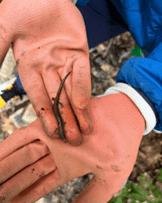 “It was surprising to find so many salamanders in this forest, which had been in a really fragmented and compromised area along the piney branch,” Matt shared. Through the community-powered forum iNaturalist, Matt was able to identify these tiny, lungless amphibians as the Eastern Red-backed Salamander.
“It was surprising to find so many salamanders in this forest, which had been in a really fragmented and compromised area along the piney branch,” Matt shared. Through the community-powered forum iNaturalist, Matt was able to identify these tiny, lungless amphibians as the Eastern Red-backed Salamander.
The Eastern Red-backed Salamander may be small, but it’s a powerhouse in our forest ecosystems, particularly here in eastern North America. Though only about 2 to 4 inches long, these lungless salamanders thrive in impressive numbers, sometimes reaching nearly 3,000 per hectare (about 2.47 acres)! As top predators of tiny invertebrates like mites and insects, they play a crucial role in controlling decomposition and nutrient cycling on the forest floor. Plus, they’re a crucial food source for many small animals, making them vital to the forest’s food web.
What began as a casual exploration quickly evolved into a deeper fascination, not just with the salamanders themselves but with their vital role in our ecosystem. As the group learned, these salamanders are more than just a curiosity; they are a keystone species in our local forests, thriving in pristine and compromised environments.
The Eastern Red-backed Salamander is an extraordinary species. Unlike most amphibians, it doesn’t rely on water to lay its eggs. Instead, it lives its entire life on land, breathing through its skin, which requires a moist environment. This salamander is particularly abundant in the Appalachian region, including the forests of Washington, DC. Its resilience in urban and fragmented habitats makes it a symbol of survival and adaptation, yet it has not been officially recognized by any state—until now.
 The campaign to designate the Eastern Red-backed Salamander as DC’s state amphibian is more than just a symbolic gesture. As Mike points out, “This isn’t just a fun and educational project for kids, which it is, but it’s also about promoting the importance of urban forests and their role in our ecosystem. By focusing on the salamander, we’re putting the spotlight on the forests themselves.”
The campaign to designate the Eastern Red-backed Salamander as DC’s state amphibian is more than just a symbolic gesture. As Mike points out, “This isn’t just a fun and educational project for kids, which it is, but it’s also about promoting the importance of urban forests and their role in our ecosystem. By focusing on the salamander, we’re putting the spotlight on the forests themselves.”
 Matt also emphasized the importance of giving DC a sense of identity and recognition akin to that of the states. As he puts it, “This isn’t about statehood, but it’s about adding a touch of what states have. By wrapping DC in these official symbols, we might change how people think about our city.” He points to previous successful campaigns, such as the one by a Girl Scout troop that achieved official status for the Big Brown Bat. These efforts showcase how small steps can lead to meaningful recognition and help foster a greater appreciation for our local wildlife and natural heritage.
Matt also emphasized the importance of giving DC a sense of identity and recognition akin to that of the states. As he puts it, “This isn’t about statehood, but it’s about adding a touch of what states have. By wrapping DC in these official symbols, we might change how people think about our city.” He points to previous successful campaigns, such as the one by a Girl Scout troop that achieved official status for the Big Brown Bat. These efforts showcase how small steps can lead to meaningful recognition and help foster a greater appreciation for our local wildlife and natural heritage.
 This effort has garnered widespread support, including from DC Council Member Janeese Lewis George, who, working in partnership with 3rd graders at Powell Elementary School, introduced a ceremonial resolution that was unanimously adopted by the DC Council on May 7, 2024, “To recognize, honor, and celebrate the Red-backed Salamander, Plethodon cinereus, and other 24 amphibians that call the District of Columbia home, and declare May 5 to May 11, 2024 25 ‘Amphibian Week’ in the District of Columbia.”
This effort has garnered widespread support, including from DC Council Member Janeese Lewis George, who, working in partnership with 3rd graders at Powell Elementary School, introduced a ceremonial resolution that was unanimously adopted by the DC Council on May 7, 2024, “To recognize, honor, and celebrate the Red-backed Salamander, Plethodon cinereus, and other 24 amphibians that call the District of Columbia home, and declare May 5 to May 11, 2024 25 ‘Amphibian Week’ in the District of Columbia.”
Councilmember Lewis George commended student research and advocacy, and she asked students to help pass legislation she introduced, “The Red-backed Salamander Official State Amphibian Designation Act of 2024,” designating the Red-backed Salamander, Plethodon cinereus, DC’s Official State Amphibian.
The enthusiasm is palpable, not only among the students and parents but also among conservationists who recognize the salamander’s ecological significance. “Amphibians everywhere are under a ton of stress,” Matt notes. “The Eastern Red-backed seems to be resilient to the chytrid fungus that is killing off many species, making it a beacon of hope for amphibian conservation.”
Those who want to support this campaign can get involved in several ways. You can contact your council members to express your support, encourage local schools to participate, testify at the upcoming hearing, or simply share the story within your community. The last day to sign up for testifying is Monday, September 16, at 5:00 pm. If you’re new to testifying, feel free to check out this fantastic resource provided by the office of Council Member Janeese Lewis George. You can also join the Google group for Matt’s updates about the campaign’s status. This movement is a chance for all of us to impact our city’s natural heritage, ensuring that future generations continue to find wonder and inspiration in the creatures that live just beneath the surface.
Let’s unite to give the Eastern Red-backed Salamander the recognition it deserves. In doing so, we celebrate this remarkable species and the urban forests that make Washington, DC, a unique and vibrant place to live.
